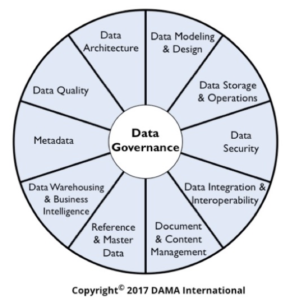by Business Analysis (BAPL)
Advancements in technology and reductions in bandwidth and storage costs mean that organisations now have the ability to capture and store large quantities of data on all sorts of processes, behaviours and systems. However, as an organisation’s data assets grow it has led to an interesting problem – they are beginning to realise that just capturing this information is not enough. Stockpiling information without clearly articulated business needs and explicitly defined requirements makes it difficult to find meaning and cut through the noise and clutter. Storing massive amounts of data with no meaningful purpose can both be a liability on the balance sheet and in the boardroom when it comes to making clear decisions. Data by itself is not an asset, knowing how to use the data is. Organisations must find a way to attribute value to their data so they can make meaningful decisions and learn.

Effective Data Governance provides numerous benefits to an organization. It can help to:
- Decrease costs associated with Data Management
- Ensure accurate procedures around regulation and compliance activities
- Improve transparency and traceability of data-related activities
- Embed best practice around the management of data assets
- Standardize data systems, policies, procedures and standards
- Resolve past and current data issues.
- Facilitate monitoring and tracking of data quality
- Ultimately increase the value of an organisation’s data, thereby increasing overall revenue.
The answer so far has been to make sure data kept is in specified locations, in controlled formats, marked with any appropriate information to help provide context or in short DATA GOVERNANCE.

Step one in the process is to figure out what type of information will help your organisation be better. To do this we go to the old BA fall-backs of Traceabilityand Strategic Direction. If an organisation knows where it is going, it is a lot easier for them to decide what data and information may be useful for making decisions. Our job as BA’s is to help the organisation understand both what they are currently doing and what questions they need to answer in order to continuously improve. Providing context to the sea of information allows you to see what data will provide actionable value vs background noise. It will also allow you to define a standardisedway of interpreting the information across the business.
So now we have a method to sort diamonds from rocks. How do we ensure that the process is relevant to our current needs? Enter the BA and the Data Steward. The Data Steward is the SME assigned by the company to validate the information and ensure that the information is relevant to today’s needs. Usually the data steward is someone that has been with the company a long time and has the unenviable task of tidying the mess made by upstream data entry users so that management can see an accurate, meaningful report. A BA’s role is to work with data stewards to understand how they are cleaning up the information or applying business rules. Once again, this is a perfect opportunity for us to help the business mature. Using a combination of information tagging (Metadata), process mapping and automation of business rules, we should be able to move tasks to their correct point in the value stream to ensure the least amount effort for the biggest return.
So far we have;
- Determined what information we need to make a decision.
- Standardised how we interpret/apply the information.
- Ensured the data we receive is appropriate and accurate
So where to from here? Well the short answer there is a lot left do. Ensuring information is current, relevant and appropriate is a continuous task. You must be able to adapt the processes and systems as organisations needs change and mature. As the process of gathering and interpreting data becomes faster/easier you will have more time to start asking more complex questions and generate greater wisdom.
One way to build data governance capability in an organisation is to adopt the GOVERN Process:
Get buy-in for data governance from senior management
Organise a committee to establish procedures, decision rights and accountability
Verify assumptions and constraints to address barriers to data governance
Ensure goals and objectives are aligned to the available resources
Report on performance of data governance initiatives by measuring results
Network for best practices to support continuous improvement
Hopefully has given you an insight into the world of data governance. There is no shortage of reading materials out there but it hard to go past the industry standard in DMBoK. If your organisation would like support in understanding this further, at BAPL, we love data.
